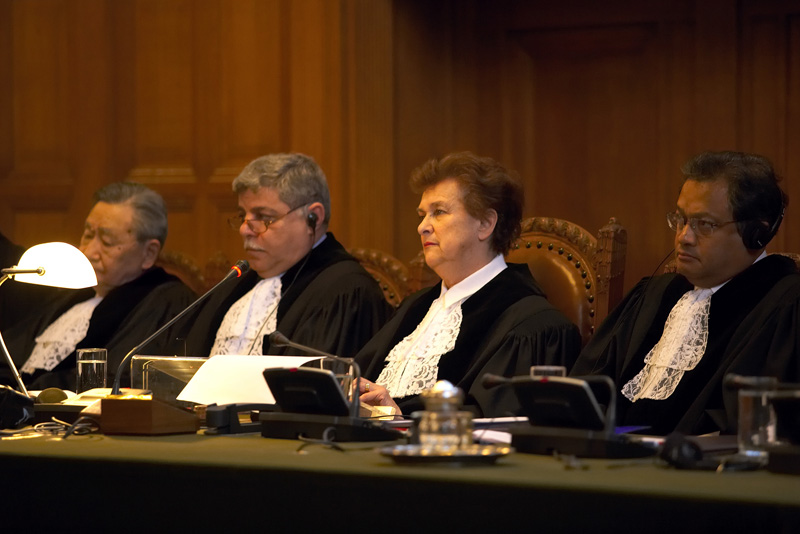
ICJ Justice Applications Now Open!

AMUN is now accepting applications for the role of Justice on the International Court of Justice simulation. This year, the International Court of Justice is simulating three cases. Keep reading for a preview of the issues facing the Justices in 2017.
Advisory Opinion: Legality of the Threat or Use of Nuclear Weapons (Historical Case)
On 15 December 1994, the General Assembly requested an advisory opinion that posed the following question: Is the threat or use of nuclear weapons in any circumstance permitted under international law? The crux of this conflict is two competing clauses of the United Nations Charter. Article 2, paragraph 4 prohibits the use of force among Member States while Article 51 outlines a Member’s right to self-defense in the face of armed conflict. The Court also must address the requirement that Members use other means to solve conflicts before the use of nuclear weapons may be justified. As with every advisory opinion, the Court must also decide whether the Court is an appropriate place for this request.
Liechtenstein v. Germany
Liechtenstein comes to the Court to seek reparation “in damage and prejudice suffered” from a dispute dating back to the days immediately following World War II. During World War II, Liechtenstein was recognized as a neutral country; Czechoslovakia opposed Germany in the war. After the war, Czechoslovakia seized all German property within its borders. During this process, citizens of Liechtenstein were treated as German nationals, so their property was seized. At the heart of this dispute is a painting seized under the decree which was once owned by the Prince Hans Adam of Liechtenstein’s family. In 1991, this painting travelled to Germany on exhibition. The Prince sued in Germany for the return of the painting; Germany refused to acknowledge his ownership claim, finding that the painting was properly seized as part of the war reparations.
Liechtenstein asks the Court to hold Germany accountable for the resulting damage to its reputation and national wealth for this painting and all other property seized by Czechoslovakia at the end of World War II.
Maritime Delimitation in the Indian Ocean (Somalia v. Kenya)
Somalia brought this suit, requesting the Court resolve the long-standing border dispute between these countries in the Indian Ocean. Both States are party to the UN Convention on the Law of the Sea (UNCLOS) which addresses borders states have close to trier shores. Kenya has claimed a large area in the Indian Ocean, granting oil and gas exploration contracts in anticipation of large profits. Pursuant to this, Kenya claims that the border should extend due east along the longitudinal line, out into the Ocean. This border gives Kenya more access to the oil-rich section of the Indian Ocean. Somalia alleges that the border should follow the same trajectory as the land border, which allows it more territory in the water.
If you think you’d like to engage in a different sort of diplomacy, one that involves critically evaluating the law, responding quickly to oral arguments, and collaboratively writing with other similar-minded students, apply today!
Keep Up With The Accords
More to read
The AMUN Accords is a premier resource for fact-based Model United Nations simulations. We are always looking for new contributors. Want to write for the AMUN Accords? Check out out the submission guidelines and then get in touch!




